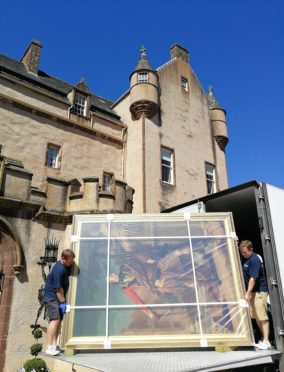A north-east castle has welcomed back an 18th Century painting, which will once again adorn its walls.
The life-size Pompeo Batoni portrait of Colonel William Gordon had been on display at the Rijksmuseum of art and history in Amsterdam, but it has now returned to Fyvie.
While in the Netherlands, the painting was viewed by about 250,000 people as part of the museum’s high society exhibition.
The work depicts the colonel dressed in the uniform of the 105th Regiment of Foot, complete with Huntly tartan.
Painted in Rome in 1766, the portrait depicts the Scot in the guise of a Roman hero standing before the ruins of the Colosseum.
The colonel is holding his sword, which he famously threatened to use to quash a revolt in the Houses of Parliament in 1780, and is seen receiving the orb of authority and laurel wreath of victory from the figure of Roma.
Iain Hawkins, the National Trust for Scotland’s general manager for the north-east, said: “It is great to have the colonel home after his travels in the Netherlands.
“It is fitting that the painting spent some time in Europe, as that is where it was painted in the first place.
“We hope that it has won a few more fans and will inspire people to come to Aberdeenshire and find out more about the Gordon family, the castle and all that the trust does to protect the painting and Fyvie Castle.”
